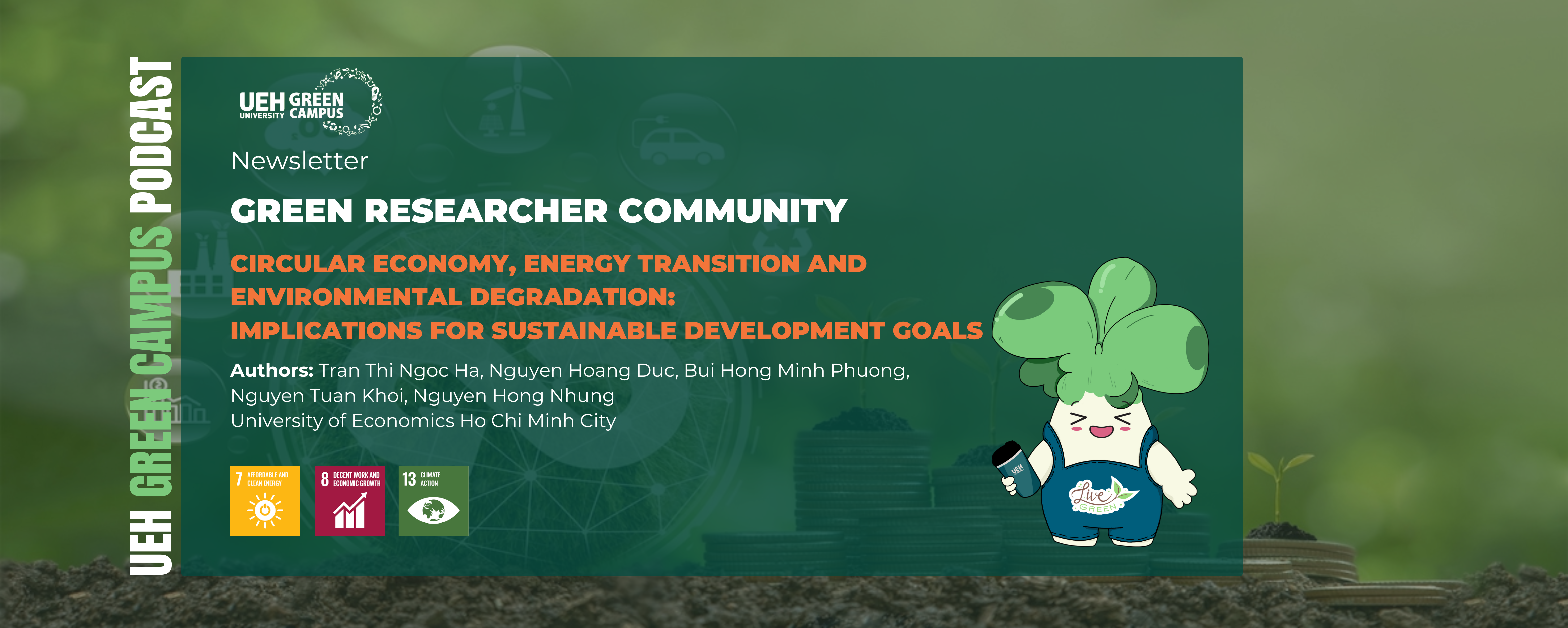Keywords: Circular Economy, Energy Transition, Environmental Policy Stringency, Supply Chain Pressure, CO2 Emissions
Do we have to sacrifice the environment for economic growth? In Southeast Asia, where the economy is booming but air pollution and CO₂ emissions are worsening, this question has become more urgent than ever. From this concern, a research team of students from the University of Economics Ho Chi Minh City (UEH) conducted the topic "Circular Economy, Energy Transition, and Environmental Degradation: Implications for Sustainable Development Goals" to find a solution for a development path that is both prosperous and sustainable.

This question is not only thought-provoking, but has long been proven by many theoretical frameworks and warns that economic growth often comes with a decline in environmental quality. Grossman & Krueger's (1991) Environmental Kuznets Curve indicates that as an economy enters the industrialization phase, pollution increases sharply, and only when a high level of income is reached does a country have the conditions to adopt clean technology, tighten environmental laws, and gradually improve this situation. Heckscher (1919) and Ohlin's (1933) Pollution Haven Hypothesis continues to emphasize that countries with lax environmental standards often become destinations for polluting industries from abroad. Additionally, Financial Intermediary Theory (Allen, 1997) and Governance Quality Theory (Francisco, 2002) show that capital flows and the enforceability of regulations play a decisive role in investment in green industries versus industries that harm the environment. These theories are the foundation for the UEH research team's analysis of data in the ASEAN-5 region, aiming to find an answer to whether the region can maintain strong economic growth while also protecting the environment.
Important factors affecting environmental degradation
To verify whether the above theories are truly applicable to the ASEAN-5 context, as well as to assess the role of financial development in influencing CO₂ emissions, the research team collected data from the World Bank and international statistical sources for the period 1996–2022. From there, the analysis team examined the impact of several key factors on CO₂ emissions, including: economic growth, foreign direct investment (FDI), financial development, and six aspects of governance quality.
*First, economic growth sometimes forces us to trade off the environment for prosperity.
Economic growth is the increase in the value of goods and services a country produces over a given period. As the economy expands, production and consumption increase, leading to higher demand for energy and resources, which in turn results in increased CO₂ emissions – particularly in the early stages of industrialization (Grossman & Krueger, 1991). However, as average income reaches high levels, the country is able to invest in clean technology and environmental policies, gradually reducing pollution, just as the Environmental Kuznets Curve model predicts.
*Second, FDI not only brings technology and jobs but can also bring pollution.
Foreign Direct Investment (FDI) is when individuals or businesses from one country invest capital to build production or business facilities in another country. FDI can bring modern technology, but it also carries the potential risk of "importing" pollution when environmentally harmful industries move to areas with low environmental standards (Heckscher, 1919; Ohlin, 1933). In many cases, FDI into mining, steel production, or dyeing industries in ASEAN has contributed to increased CO₂ emissions, supporting the Pollution Haven hypothesis.
*Third, financial development can either fuel the green economy or boost harmful industries.
Financial development reflects the level of maturity of the banking system, capital markets, and other financial institutions in a country. A developed financial system can efficiently mobilize and allocate capital, creating financing opportunities for renewable energy and clean technology projects. However, without direction and regulatory controls, this capital flow can easily go into heavy industries or fossil fuels, increasing CO₂ emissions (Allen, 1997). Therefore, the regulatory role of fiscal policy is the decisive factor in whether this system becomes a driving force or a burden on the environment.
*Fourth, the quality of governance determines whether the environment is protected or left open.
The quality of governance reflects the effectiveness, transparency, and accountability of the state apparatus in governing the country (Francisco, 2002). The six commonly measured aspects include: governance effectiveness, which is the ability to deliver public services and enforce policies; regulatory quality, which is the extent of business support and environmental protection; rule of law, which is respect for and compliance with the law; political stability, which is a safe and conflict-free political environment; control of corruption, which is the limitation of power abuse for personal gain; and voice and accountability, which is the extent to which citizens can speak out and the press is free. A good governance system will help enact strict environmental laws and ensure that enforcement is not "circumvented," thereby curbing CO₂ emissions. Conversely, poor governance can easily render policies ineffective, creating conditions for polluting activities to thrive.
Conclusion and Policy Implications
Experimental results show that economic growth factors, FDI, financial development, and governance quality all have a significant impact on CO₂ emissions in ASEAN-5. Most of these effects are consistent with theory: economic growth and FDI increase pollution, while effective governance helps reduce emissions.
However, the study also noted some highlights. The negative impact of FDI on the environment is stronger than expected, reflecting the trend of attracting capital by relaxing environmental standards in the region. Governance quality shows significant regulatory capacity, helping to mitigate the negative impact of growth and FDI when institutions are strong enough. Meanwhile, financial development does not automatically lead to environmental improvement if capital flows are not directed toward green industries.
Through this, the research team proposes several recommendations aimed at both promoting economic development and protecting the environment in ASEAN-5.
First, strict environmental policies have brought about a clear reduction in emissions. This shows that countries in the region need to continue raising emission standards and implementing environmental taxes such as carbon taxes, energy taxes, and fossil fuel consumption taxes to both put pressure on polluting businesses and promote the transition to green technologies.
Second, pressure from the supply chain is becoming a significant driver for businesses to adopt green production and comply with ESG standards. The government can leverage this trend by providing technical and financial support to businesses in the chain, while also encouraging the sharing of environmental responsibility among stakeholders.
Thirdly, a notable point is that the circular economy, despite expectations, still carries the risk of increasing CO₂ emissions if it consumes a lot of non-renewable energy during recycling and material reprocessing. Therefore, circular economy strategies need to be designed comprehensively, ensuring that environmental benefits are not offset by potential energy costs.
Fourth, waste management is still not synchronized across the entire product lifecycle. Incorporating 3R programs (Reduce – Reuse – Recycle), eco-design, sustainable production, and extended producer responsibility into the legal framework, along with specific sanctions, will help control emissions more systematically and effectively.
Finally, a strong, transparent, and intersectorally coordinated legal system is a prerequisite for environmental policies to be effective. Strict monitoring mechanisms and specific CO₂ emission reduction targets will ensure that these policies are not just on paper but actually create change in practice.
The research paper has indirectly contributed to SDG 7 - Affordable and Clean Energy, SDG 8 - Decent Work and Economic Growth, and SDG 13 - Climate Action. See the full Research Paper “Circular Economy, Energy Transition, and Environmental Degradation: Implications for Sustainable Development Goals” AT HERE.
Authors: Tran Thi Ngoc Ha, Nguyen Hoang Duc, Bui Hong Minh Phuong, Nguyen Tuan Khoi, Nguyen Hong Nhung - University of Economics Ho Chi Minh City.
This article is part of the Green Research Community series with the message "Research Contribution for UEH Living Lab Green Campus", UEH sincerely invites the community to follow the next Green Research Community newsletter.
*To create maximum conditions for the development of the "UEH Green Researcher Community," members of the community will be able to attend scientific research methods classes related to the topics of Living Lab and Green Campus. Additionally, upon meeting the standards, the research team will receive a certificate from the UEH Sustainable University Project Board and financial support for a standard-compliant project.
More Information:
SDG 7 – Clean and Sustainable Energy calls for ensuring access to reliable, sustainable, modern, and affordable energy for all. This goal emphasizes expanding renewable energy infrastructure, improving energy efficiency, and strengthening international cooperation in green technology research and innovation. Beyond energy supply, SDG 7 also aims to reduce dependence on fossil fuels, thereby limiting negative impacts on the environment and climate.
SDG 8 – Sustainable Economic Growth and Decent Work encourages sustained, inclusive, and sustainable economic growth while promoting full, productive, and decent employment for all. This goal focuses on innovation, increasing labor productivity, supporting small and medium-sized enterprises, and ensuring fair labor standards. Beside the economic aspect, SDG 8 is also closely linked to social factors, aiming for inclusive development and reducing inequality in employment opportunities.
SDG 13 – Climate Action calls for urgent action to combat climate change and its negative impacts, thru reducing greenhouse gas emissions, enhancing adaptability, and raising public awareness. This goal not only includes national-level policies but also requires changes in individual and community behavior in daily life, especially in areas directly related to waste generation and management.
News, photos: UEH Green Campus Project, UEH Youth Union - Student Association, UEH Communications and Partnership Development Department
Voiceover: Thanh Kiều







